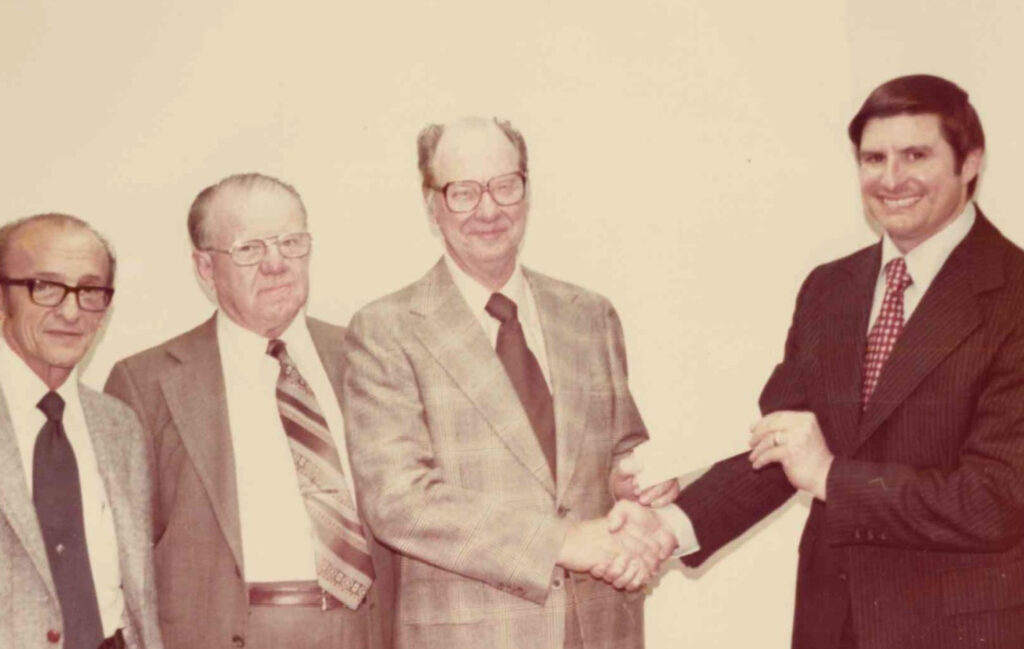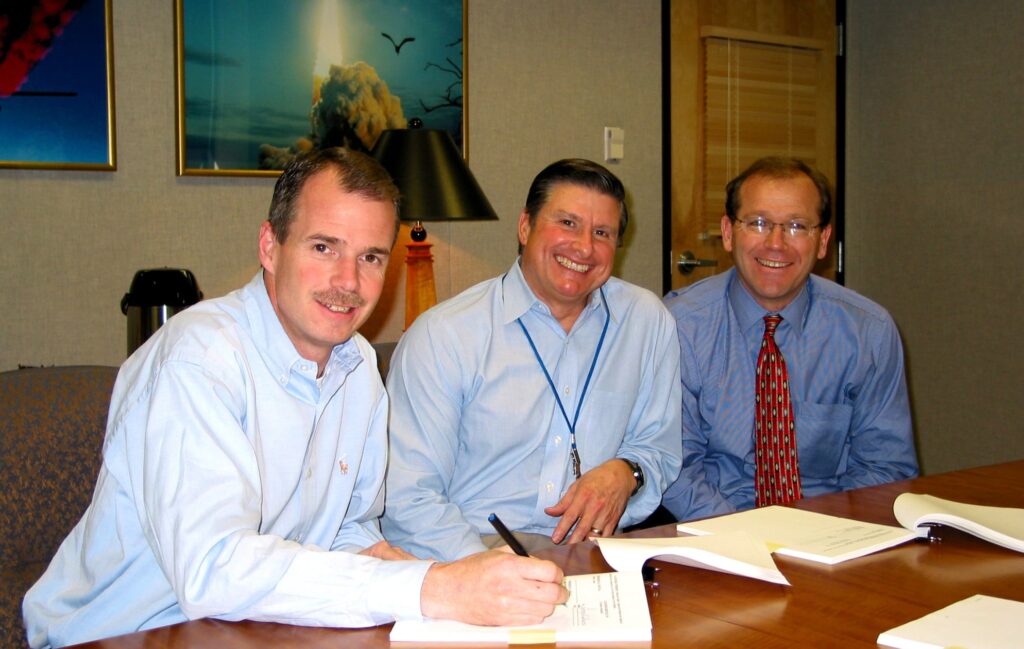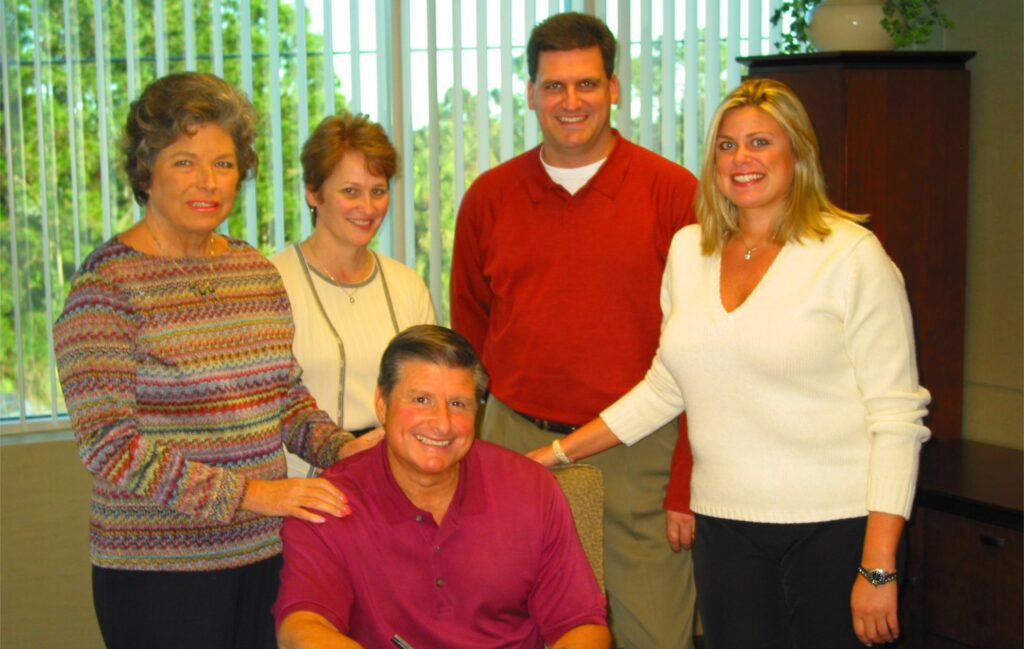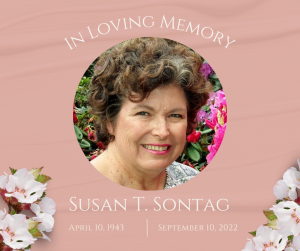
Hello, you are using an old browser that's unsafe and no longer supported. Please consider updating your browser to a newer version, or downloading a modern browser.

Hello, you are using an old browser that's unsafe and no longer supported. Please consider updating your browser to a newer version, or downloading a modern browser.
“The Last of Human Freedoms is the Ability to Choose One’s Attitude in a Given Set of Circumstances”
– Viktor Frankl
Rick and Susan Sontag grew up in Long Beach, California and first met when they were in 9th grade. They began dating in college and were married in 1965.
After graduating from Harvard Business School, Rick held several marketing positions, but was dissatisfied with corporate life and ended up being terminated from jobs three times, the last time in 1978. At that time, they were living just north of Rockford, Illinois. Frustrated by his dismal corporate experiences Rick told Susan that he probably didn’t fit in the corporate environment. Maybe this was a good opportunity to work for himself by finding a company to buy and becoming an entrepreneur. Of course, they had not much in savings and would have to start all over again. But Susan enthusiastically supported Rick and encouraged him to do it. Rick then ventured out to find a company to purchase.
His first two attempts to buy a company were miserable failures and wasted cash and time. After nearly two years of searching and no source of income their financial reserves were running low. Finally in late 1979 Rick found a small aircraft parts manufacturing company in Rockford that fit the bill. Rick was able to line up two venture capital investors and a local bank to make the purchase. That purchase was consummated in 1980. They renamed the company Unison Industries. The acquisition closed just before the major world recession of 1980-1982 when bank prime interest rates rose to over 20%. Not an auspicious start.

Unison had problems at the beginning, but after three years of hard work there was light at the end of the tunnel. By 1985, Unison was stable and growing again.
In 1990, Unison was doing well enough that it acquired an aircraft components operation of Allied-Signal Corporation that was five times its size. With that acquisition, Unison moved its headquarters to Jacksonville, Florida. Unison continued growing, and by 1993 had 500 employees and sold products to over 100 countries around the world. Rick, Susan and their three children were doing well. Life was good.
On June 24, 1994 Rick and Susan’s world collapsed. That night Susan had a stroke. When she awoke the next morning, she had lost her short-term memory, was confused, and began having seizures. A short time later, she was diagnosed with an anaplastic astrocytoma, an aggressive form of brain cancer. Doctors told Rick she had a life expectancy of around 3 years. Rick was desperate to find a proper course of treatment for Susan and spent countless hours trying to educate himself on the disease and its treatment. It was a frustrating experience, because not much information or help was available. He did not give up, however, and eventually Susan entered into an experimental clinical trial with a very severe treatment regimen. By some miracle she survived, albeit with serious cognitive and physical issues.
Rick’s whole experience with Susan’s medical emergency, the diagnosis of a terminal form of brain cancer and the uncertainty of not knowing whether he had made the right decision on a course of treatment made him realize that something needed to be done to improve this situation for others facing the same problem. So he made a promise to himself. He vowed, “if I ever get the opportunity to do something about this horrible disease and its effect on patients and caregivers, I’m going to do it.”
Over the next several years Unison continued to grow. By 2001, it had grown to four manufacturing operations in North America with 1,500 total employees. That year Rick was approached by one of Unison’s customers, General Electric, who was interested in acquiring Unison. GE’s timing was right, and Rick negotiated with them to sell the business. In 2002, the sale closed. Finally, Rick had his opportunity to do something about brain cancer.

After the GE acquisition, Rick and Susan took part of the sale proceeds and formed The Sontag Foundation. They, along with two of their children, Fred and Cindy, were the initial Board of Directors. They hired an Executive Director and chose to fund brain tumor research as the Foundation’s main mission. While The Sontag Foundation has expanded into some other activities over the years, the funding of research related to brain tumors is still its main mission. It has grown into one of the largest private funders of brain tumor research in North America.

Rick and Susan didn’t stop at funding brain tumor research. Rick remembered the total frustration he had as Susan’s caregiver trying to locate the best treatment option for Susan and finding information about coping with the effects of the disease. His experience led the Foundation to begin helping patients too. It started in 2004 when the Foundation established a Brain Tumor Support Group in its home turf of Northeast Florida. Every month thereafter up to the present day a group of brain tumor patients and their caregivers meets in Jacksonville to discuss the issues associated with living with a brain tumor – topics like dealing with the effects of brain surgery, seizures, falling, memory loss, driving or insurance problems. The Northeast Florida Brain Tumor Support Group is now one of the largest brain tumor support groups in the US and for the first fifteen years Rick and Susan personally attended almost every meeting.
These support group meetings gave the Foundation staff a deep understanding of how to help brain tumor patients with their assortment of problems. Also, as the Foundation became more established in funding brain tumor research, patients and their caregivers from around the US began to call the Foundation staff to inquire whether they could help them find clinical trials or second opinions – or just explain how to find better information to aid them in dealing with the disease. Since the Foundation was familiar with the work of numerous brain tumor clinicians and researchers around North America, Foundation staff soon found themselves consulting with this network of specialists in order to help patients throughout the country – and occasionally in foreign countries as well.
After doing this ad hoc for a number of years it became clear that the frustration Rick felt in 1994 in trying to understand the disease and locate the proper treatment for Susan was still a major problem for others. Over time it became obvious. There was a crying need to do this kind of patient support on a full time, organized basis. So in 2014 Rick and Susan formed a new national non-profit entity called The Brain Tumor Network. The Brain Tumor Network was established as an independent organization, but Rick and Susan made sure it stayed closely tied to The Sontag Foundation. Its main mission is supporting brain tumor patients.
The Brain Tumor Network started with one nurse navigator from Mayo Clinic and has grown steadily since then. It now comprises a large group of medically knowledgeable nurse navigators, social workers, medical records people and support staff – all with the mission of helping brain tumor patients. This group is supported by custom information systems and is connected to the entire medical network of The Sontag Foundation. The Brain Tumor Network staff help patients throughout the US find their way to more effective treatment as well as cope with the practical problems of living with the disease at no cost to patients or their families. The Brain Tumor Network has become one of the largest organizations of its kind in the US.
Miraculously, Susan lived for 28 years after her brain cancer diagnosis. Over time, however, the ravages of the stroke, the brain cancer, and the severe radiation and chemotherapy treatments took their toll. In 2022, Susan lost her battle and passed away. Her bravery in facing the effects of the disease serves as a lasting inspiration to continue the work she and Rick began in 2002.
